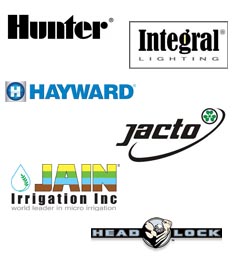
When you’re in a drought situation, such as the Midwest had in the summers of 2011 and 2012 and the Southwest and California regularly experience, the last thing you should be doing is having to water your water-hungry lawn on a regular basis, but how else do you keep it from turning brown and burnt?
Fortunately, there are many drought-tolerant grasses available which significantly reduces how much watering they require and how often they must be watered. Let’s take a look at drought-tolerant grass species that can help reduce your dependence on watering.
Kentucky 31 Tall Fescue
Tall Fescue is the most common cool-season grass in the U.S., and Kentucky 31 is one of the oldest cultivars, discovered in 1931 by a University of Kentucky professor. He was so impressed by its properties that he collected and propagated seeds as a lawn grass, livestock feed, and conservation grass.
Bermuda Grass
Doing well in full sun and having exceptional traffic tolerance, Bermuda grass responds well to watering after droughts and requires frequent watering. A warm season grass, you’ll need to overseed with a cool season grass for a green lawn in spring and fall.
Zoysia Grass
Zoysia grass was originally developed for golf courses, as it tolerates full sun or deep shade and handles foot traffic very well. Though it is slow to establish from plugs, this warm-season grass requires little water or mowing and forms into a thick carpet of grass.
Buffalo Grass
If you have a lot of sun and little traffic, buffalo grass is an excellent multi-season grass, doing well in spring, summer or fall with as little as 1/4″ of water weekly. It must be left at least 5″ tall and has to be started from plugs instead of seed, so it takes a little more dedication. But if you want to plant it and forget about it, buffalo grass is a great choice!
One other way to reduce your lawn’s water consumption is by setting up an automated irrigation system. Though this sounds contrary to the idea of conserving water, an automated system puts exactly the right amount of water right where it’s needed, instead of simply watering the lawn on a timer or hoping your kids don’t just leave the hose running. Take a look at our automatic controllers, and please feel free to contact us with any questions you may have for our experts.





